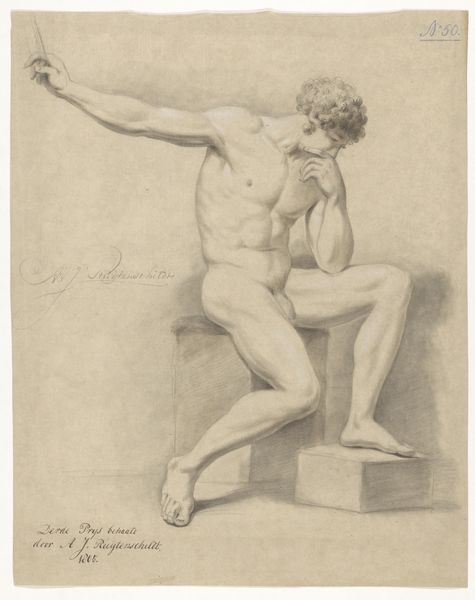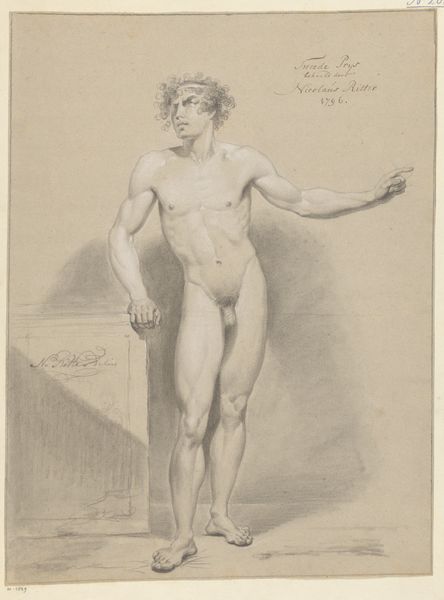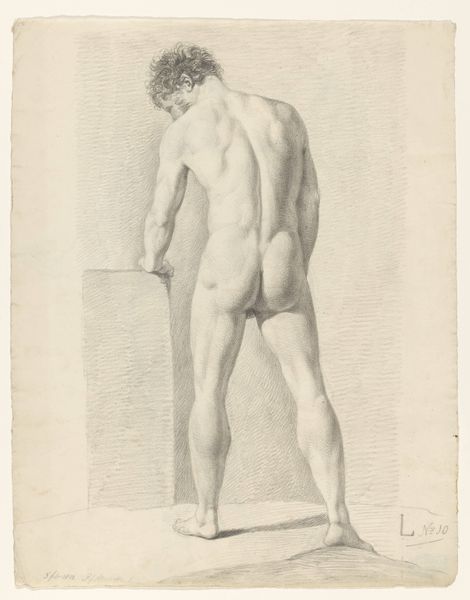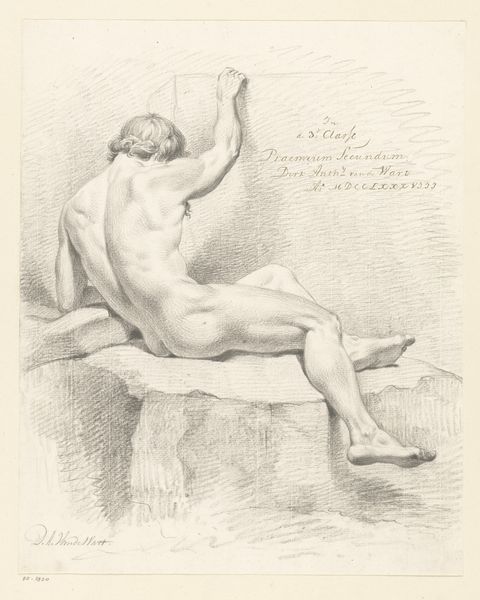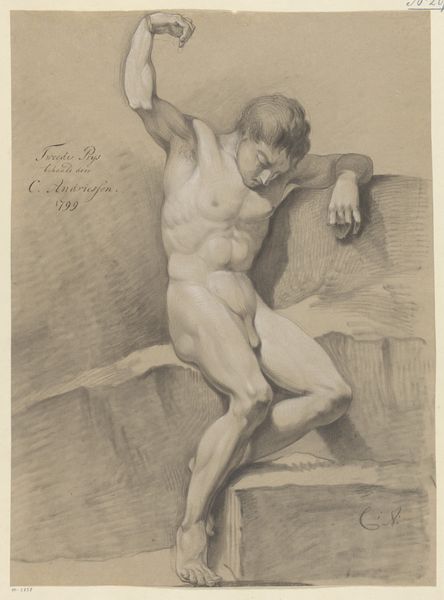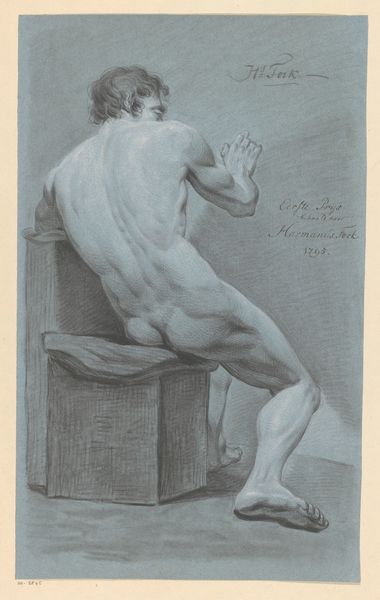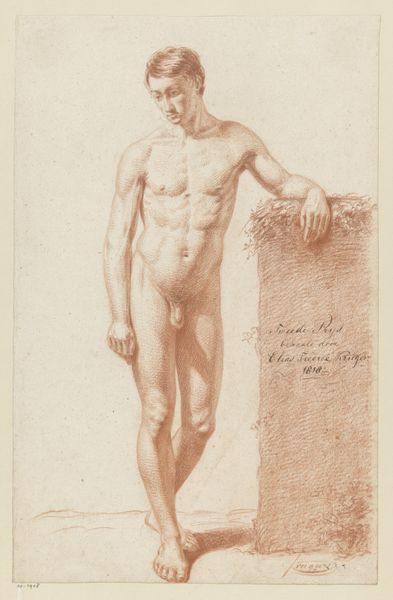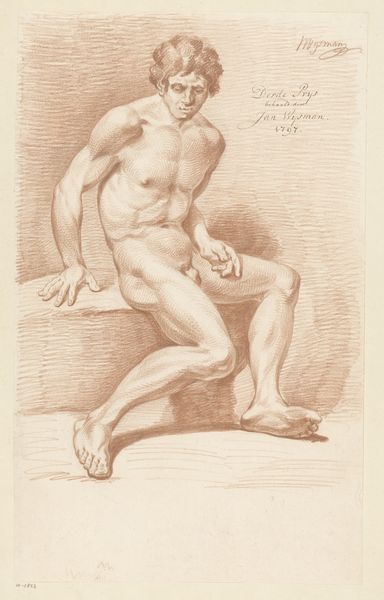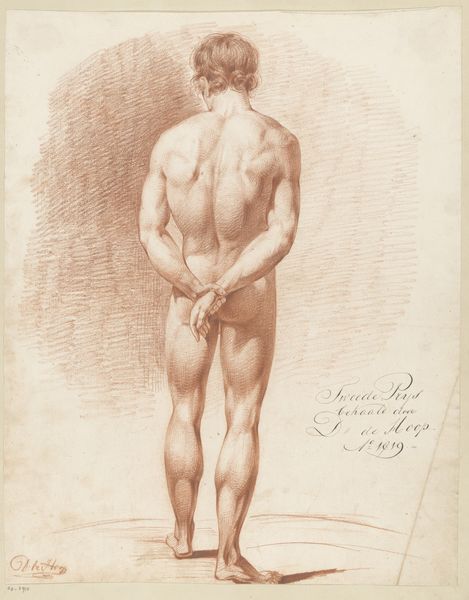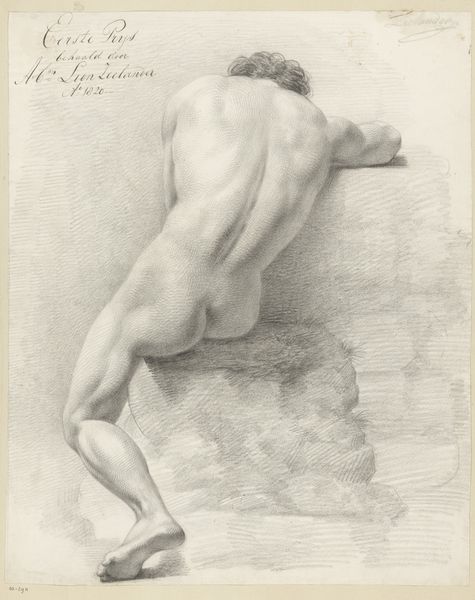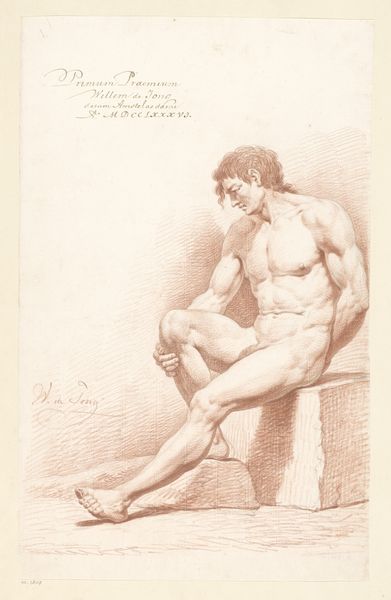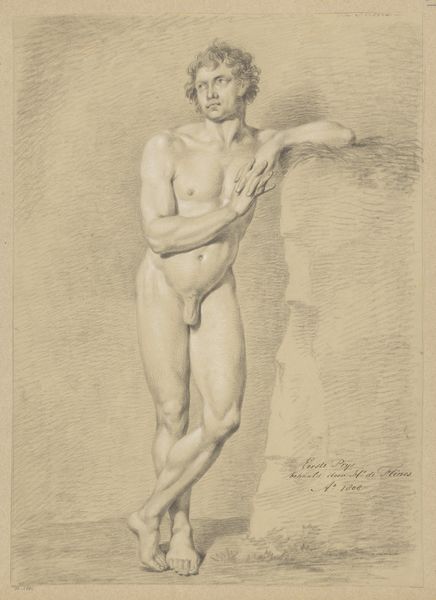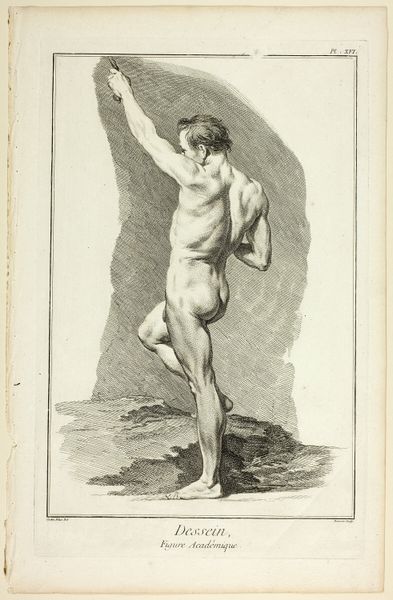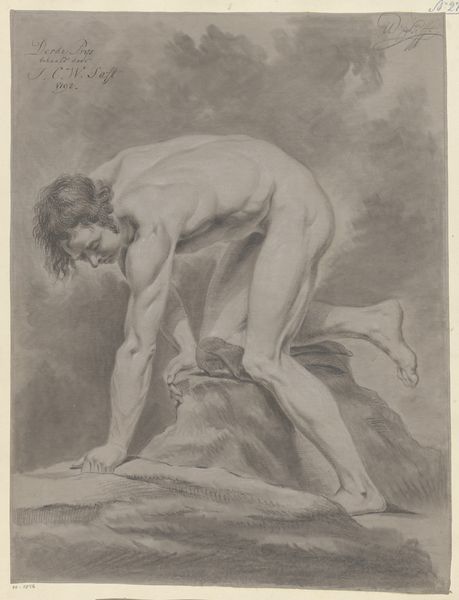
drawing, pencil, graphite
#
portrait
#
pencil drawn
#
drawing
#
classical-realism
#
charcoal drawing
#
figuration
#
pencil drawing
#
pencil
#
graphite
#
academic-art
#
nude
Dimensions: height 501 mm, width 399 mm
Copyright: Rijks Museum: Open Domain
Daniël Batavus Voorman created this standing male nude in 1818 using graphite on paper. The graphite pencil, by then a relatively recent invention, allowed for a fineness of line and subtlety of shading that would have been impossible with the older medium of silverpoint. Look closely, and you'll see the way Voorman coaxes a full range of tones from his pencil, using hatching and cross-hatching to define the figure’s musculature and the soft light that falls across it. This was not just a matter of technique, but of discipline. Academic drawing in the 19th century was considered essential training for any artist, providing a foundation for all other creative activity. It was a means of instilling not just skill, but values: precision, control, and a commitment to close observation. The use of graphite emphasizes the importance of mastering fundamental skills and time in the making process. In doing so, it blurs the lines between craft and fine art.
Comments
No comments
Be the first to comment and join the conversation on the ultimate creative platform.
